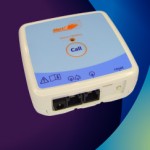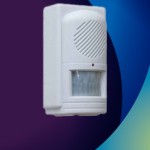Beyond Tonic-Clonic: How the Guardian Monitor P200 Detects Subtle Seizure Types Through Breathing and Movement

When most people think of
seizure detection, they imagine tonic-clonic seizures — the type most
associated with convulsions and visible movement. But not all seizures are that
easy to identify. Many, such as focal, tonic, atonic and complex focal seizures
can occur with few or no outward signs. These subtle seizure types are often
missed by traditional movement-based detection systems, leaving individuals at
risk — especially when alone or asleep.
At Epilepsy Solutions, we’re
committed to helping people live safely and independently with the support of
intelligent assistive technology solutions. One such innovation is the newly
updated Guardian Monitor P200 — a device that has transformed how we detect
seizures by detecting through an under-mattress sensor, the changes in the
user’s shallow movement rate (the movements associated with the rise and fall
of the chest). Allowing alarm notifications to be raised if these movements
increase or decrease in frequency and with adjustable control for how long the
Guardian needs to stop seeing any shallow movements before an alarm is raised.
Moving Beyond Traditional
Seizure Alarms
Conventional seizure detection
systems typically rely on motion sensors to pick up the shaking associated with
tonic-clonic activity. While effective in many cases, they can’t detect seizure
types that don’t involve convulsions. This means many seizure events that do
not involve convulsions may go unnoticed, reducing the opportunity for timely
assistance or accurate health insights.
The Guardian Monitor P200
addresses this gap by using advanced technology to monitor breathing and
movement patterns — indicators that can reveal a much broader range of seizure
activity.
How the Guardian Monitor P200
Works
The Guardian Monitor P200
detects changes in breathing patterns and body movement that may indicate
seizure activity, providing an early alert to carers or family members
Breathing rate: The device
detects pauses or increased or decreased breathing rates that may accompany
certain seizure types.
Smart alerts: When the set
parameters are breached, the system sends instant alerts to carers or
monitoring centres via pager, nurse call, or digital telecare systems.
This combination of continuous
monitoring and instant alerting ensures that help can be provided quickly —
even if the person is unaware or unable to call for assistance.
With the aid of a free downloadable
app the caregiver can now see a time logged insight into their user’s activity
and display it in a visual format via easy-to-read graphics.
Supporting Independence and
Peace of Mind
For individuals living with
epilepsy or similar neurological conditions, the Guardian Monitor P200 offers
an invaluable safety net. It enables early intervention and gives families,
carers, and clinicians greater confidence in managing care safely and effectively.
By recognising seizure types
that don’t produce visible movement, the P200 helps close the gap between
what’s seen and what’s really happening — allowing for safer nights, faster
responses, and improved quality of life.
Seamless Integration with
Digital Care Systems
The Guardian Monitor P200
integrates easily with modern digital telecare platforms, allowing alerts to be
transmitted locally or remotely. Whether in a home, supported living, or
residential care setting, it can form part of a wider connected care system
that keeps people safe 24/7.
Conclusion
At Epilepsy Solutions, we’re
proud to supply and support technologies like the Guardian Monitor P200 that
extend the boundaries of what’s possible in assistive care.
By monitoring changes in
breathing, this device detects seizure types that might otherwise go unnoticed
— offering enhanced safety, reassurance, and independence for people living
with epilepsy and related conditions.
To find out more or arrange a
demonstration, contact us at:





